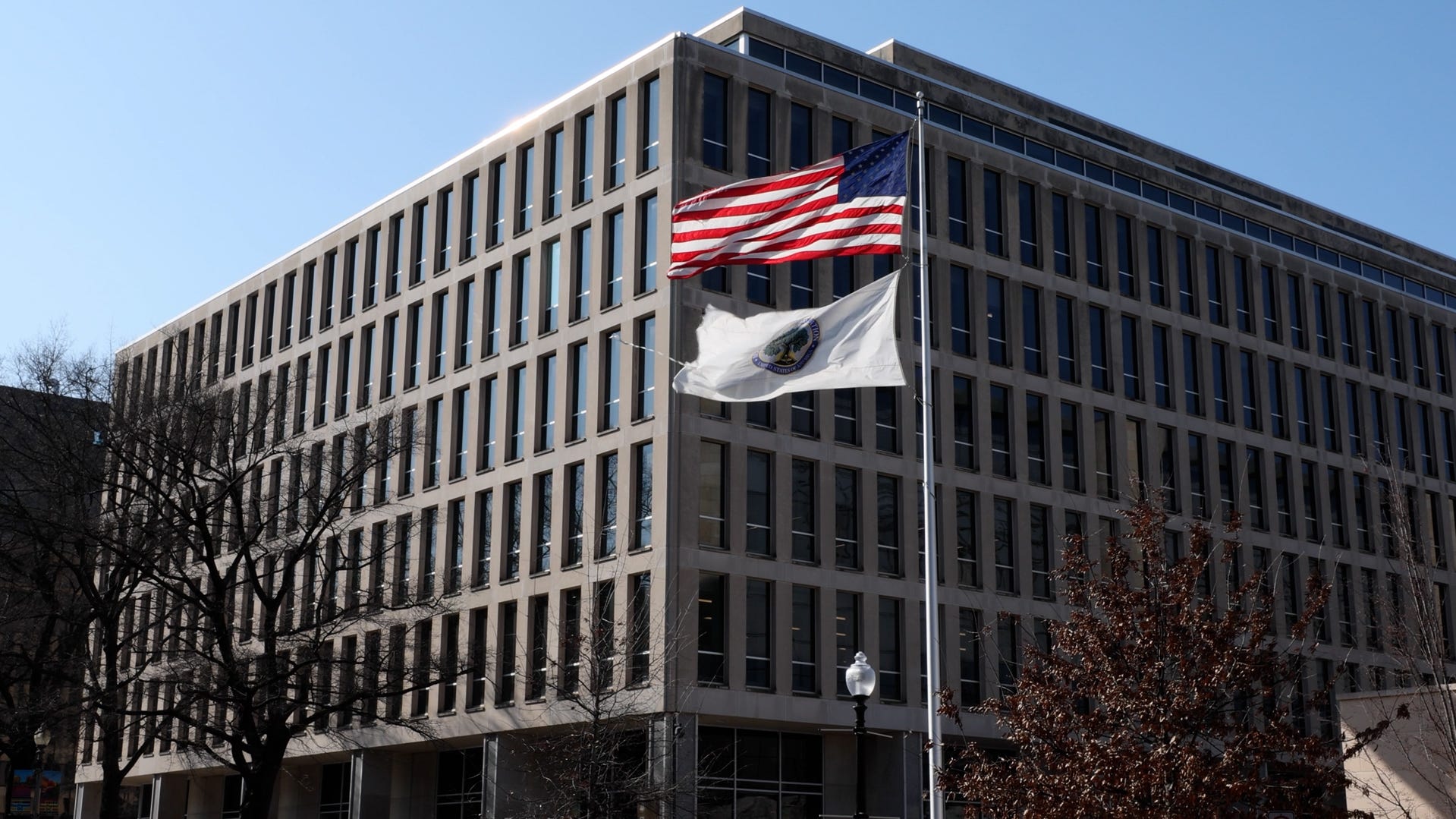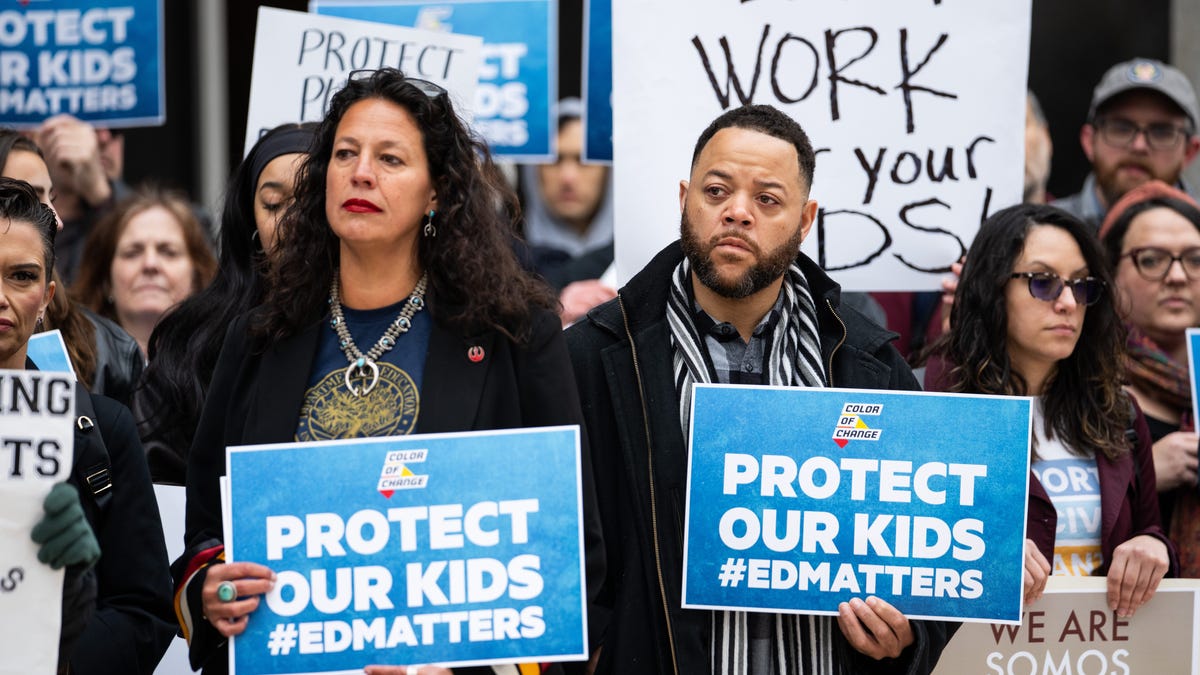## Is the SBA About to Become Your Loan Officer? Trump’s Big Move on Student Debt Remember those crushing student loan payments you’ve been struggling with? Well, the White House just threw a curveball, handing the reins of student loan management to an unlikely player: the Small Business Administration. Yes, you read that right, the folks who help out entrepreneurs are now tasked with dealing with your college debt. Is this a game-changer or just another bureaucratic headache? Let’s dive into the details and see what this bold move could mean for you.
Borrower Experience

The transition of student loan management from the Department of Education to the Small Business Administration (SBA) or another federal entity is a highly anticipated move that will significantly impact the borrower experience. Borrowers can expect several changes, primarily in the areas of communication and support. The shift in oversight will likely result in a change in the address to which loan payments are sent, as well as the contact information for support services.
One of the more immediate changes will be the communication channels for borrowers. As the transition takes place, borrowers may encounter delays in receiving updates about their loan status or changes in repayment options. The SBA or the new managing agency will need to establish new systems to manage the vast amount of data and information currently handled by the Department of Education. During this period, borrowers should anticipate disruptions in service and delays in processing applications and payments.

Changes in Communication and Support
Communication channels, such as the customer service hotline, will likely change, which may lead to confusion among borrowers. The SBA or another agency will need to set up new contact points, and borrowers will be notified of these changes. This transition may result in a temporary increase in call volumes and longer wait times as the new agency gets up to speed. Additionally, online platforms and applications will need to be updated, potentially causing temporary outages or delays in service availability.

Future Prospects
The long-term implications of shifting student loan management to another federal agency are both complex and varied. The transition will affect not only how loans are managed but also the strategies and policies that govern student loan repayment. The future of student loans and the processes involved in managing them will depend largely on how effectively the new managing agency can integrate the student loan portfolio into its existing operations.

Long-Term Implications for Student Loan Management and Repayment Strategies
The transition to a new managing entity could lead to changes in the repayment strategies available to borrowers. For instance, if the SBA takes over, they might incorporate repayment plans that align with their existing small business loan programs. This could introduce innovative repayment methods that allow borrowers to align their loan payments with their income or business revenue, akin to the SBA’s approach to small business loans.
However, the long-term success of these changes will hinge on the efficiency and effectiveness of the new management structure. The SBA, if it takes over, will need to significantly expand its capacity to handle such a large portfolio. The transition will require substantial investment in technology and personnel to ensure seamless service delivery. If executed poorly, it could result in significant delays and errors, negatively affecting borrowers.

Congressional and Public Reactions
Legislative Challenges
The dismantling of the Department of Education and the transition of student loan management to another agency will require significant legislative action. The Constitution does not explicitly grant the president the authority to dismantle a cabinet-level department without congressional approval. Therefore, President Trump will need to secure bipartisan support in Congress to pass the necessary legislation. This legislative hurdle is a significant challenge, given the current political landscape and the lack of bipartisan consensus on key issues.
The process of dismantling the Department of Education and reallocating its functions will be technically complex. The Department of Education’s role in managing student loans involves intricate financial and administrative processes that are deeply embedded within the agency. Transferring these responsibilities to the Small Business Administration or another entity will require extensive coordination and integration efforts.
Public and Expert Reactions
Public opinion regarding the dismantling of the Department of Education and the transfer of student loan management is mixed. Residents in cities like Columbia, Missouri, and New York City have expressed varying degrees of concern and support. Some citizens are hopeful that the shift could streamline the process and reduce bureaucracy, while others are worried about the potential for service disruptions and inefficiencies.
Experts such as Andrew Gillen, a research fellow at the Cato Institute, have provided insights into the potential impacts of this transition. Gillen suggests that while the actual management of student loans might not change drastically for borrowers, the process of transitioning the portfolio to a new agency will be highly complex. He notes that the Treasury Department could provide a more efficient transition due to its existing infrastructure and systems for handling large volumes of financial transactions.
Media coverage has been extensive, with major outlets such as Gizmoposts24 analyzing the implications of this shift. The media has highlighted the technical challenges and the potential disruptions that could arise during this transition. The coverage emphasizes the need for clear communication and a well-executed transition plan to mitigate the risks.
Future Scenarios
Possible Outcomes
The full dismantling of the Department of Education and the transfer of student loan management to the SBA or another federal entity could lead to a reorganization of the education sector. This reorganization could streamline operations and reduce redundancy, but it also poses significant risks. If the transition is not managed effectively, it could result in prolonged periods of inefficiency and disarray.
An alternative scenario involves a partial reorganization, where key functions such as the administration of student loans are transferred, while other responsibilities of the Department of Education are retained or distributed among other agencies. This approach could provide a more gradual and less disruptive transition, but it would still require substantial legislative action and interagency coordination.
Legislative actions are expected to play a crucial role in addressing the shift in student loan management. Congress will need to pass specific legislation to ensure a smooth transition and to define the new roles and responsibilities of the managing agency. This legislation could include provisions for safeguarding borrower rights and ensuring continuity of service during the transition period.
Preparing for Change
For student loan borrowers, preparing for potential changes involves staying informed and proactive. Borrowers should keep a close eye on announcements from both the Department of Education and the SBA or the new managing entity. It is advisable for borrowers to review and update their contact information and keep copies of all financial records and correspondence related to their loans.
Federal agencies, particularly the SBA, will need to prepare extensively for the shift. This preparation will include hiring additional staff, updating IT systems, and setting up new customer service protocols. The Department of Education must ensure a smooth handover of data and records to minimize disruptions for borrowers.
Policy recommendations for a smoother transition include creating a comprehensive transition plan with clear timelines and milestones, establishing a dedicated task force to oversee the handover process, and ensuring robust communication with the public to manage expectations and mitigate concerns.
Additional Considerations
Department of Government Efficiency (DOGE)
The Department of Government Efficiency (DOGE), led by Elon Musk, has been instrumental in driving the push to downsize the federal government and streamline operations. DOGE’s involvement in the process of dismantling the Department of Education underscores a broader effort to reduce federal bureaucracy and improve operational efficiency. Musk has positioned this move as a step towards more efficient governance, aiming to reduce the administrative burden on borrowers and ensure that federal resources are utilized more effectively.
DOGE’s role will be critical in facilitating the transition of student loans. The Department will need to ensure that the SBA or any other managing entity is equipped to handle the intricacies of student loan management. This includes having the necessary IT infrastructure, customer service protocols, and legal frameworks in place to maintain the integrity of the student loan system.
Impact of Staff Layoffs
The Department of Education has undergone significant staffing changes, with over 10% of the workforce taking buyout offers, and a further 50% of staff facing layoffs. These layoff efforts are part of Project 2025, a conservative policy blueprint that aims to reduce the size and scope of federal agencies. The impact of these layoffs on the department’s functioning is considerable, as it may lead to a reduced capacity to handle day-to-day operations and a potential slowdown in processing applications and loan disbursements.
Despite the layoffs, the department has pledged to continue statutory programs, ensuring that the flow of funds to schools and students remains uninterrupted. This continuity is critical to maintaining the stability of education funding and support for students and educators. However, the reduced staff numbers may necessitate increased automation and the outsourcing of certain tasks to contractors, which could affect the quality of service provided to borrowers.
To ensure a smooth transition, the Department of Education has offered severance packages and benefits to laid-off staff. These measures aim to mitigate some of the immediate financial impacts on employees while providing some stability during the transition period. The transition, while intended to streamline operations, will require meticulous planning and execution to avoid significant disruptions for current and future borrowers.
Conclusion
Shifting the Tides: Trump’s Historic Move on Student Loan Management
In a groundbreaking decision, President Trump has ordered a significant shift in the management of student loans, entrusting the Small Business Administration (SBA) with the responsibility of overseeing the massive debt burden. This bold move, as reported by USA TODAY, aims to bring a much-needed injection of entrepreneurial spirit and innovation to the complex world of student loan management. Key takeaways from the article reveal that the SBA’s involvement is expected to streamline the process, reduce costs, and provide more flexible repayment options for struggling borrowers. Moreover, the SBA’s expertise in small business lending is seen as a promising solution to help alleviate the nation’s staggering student loan debt, which has reached an unprecedented $1.7 trillion.
The implications of this move are far-reaching and profound. By leveraging the SBA’s expertise in small business lending, the administration hopes to create a more efficient and borrower-friendly system. This shift in policy has the potential to not only ease the financial burden on millions of students but also stimulate economic growth by freeing up capital that would otherwise be locked in debt repayment. As we look ahead, it will be interesting to see how this new approach unfolds and whether it can make a meaningful impact on the lives of those struggling with student loan debt.
As the nation watches with bated breath, one thing is certain: this historic move has the potential to redefine the way we manage student loans. With the SBA at the helm, we may finally see a glimmer of hope for a more sustainable and equitable solution to this pressing issue. Will this be the turning point we’ve been waiting for? Only time will tell, but one thing is clear: the future of student loan management has just taken a dramatic turn, and we can’t wait to see what’s next.



Add Comment